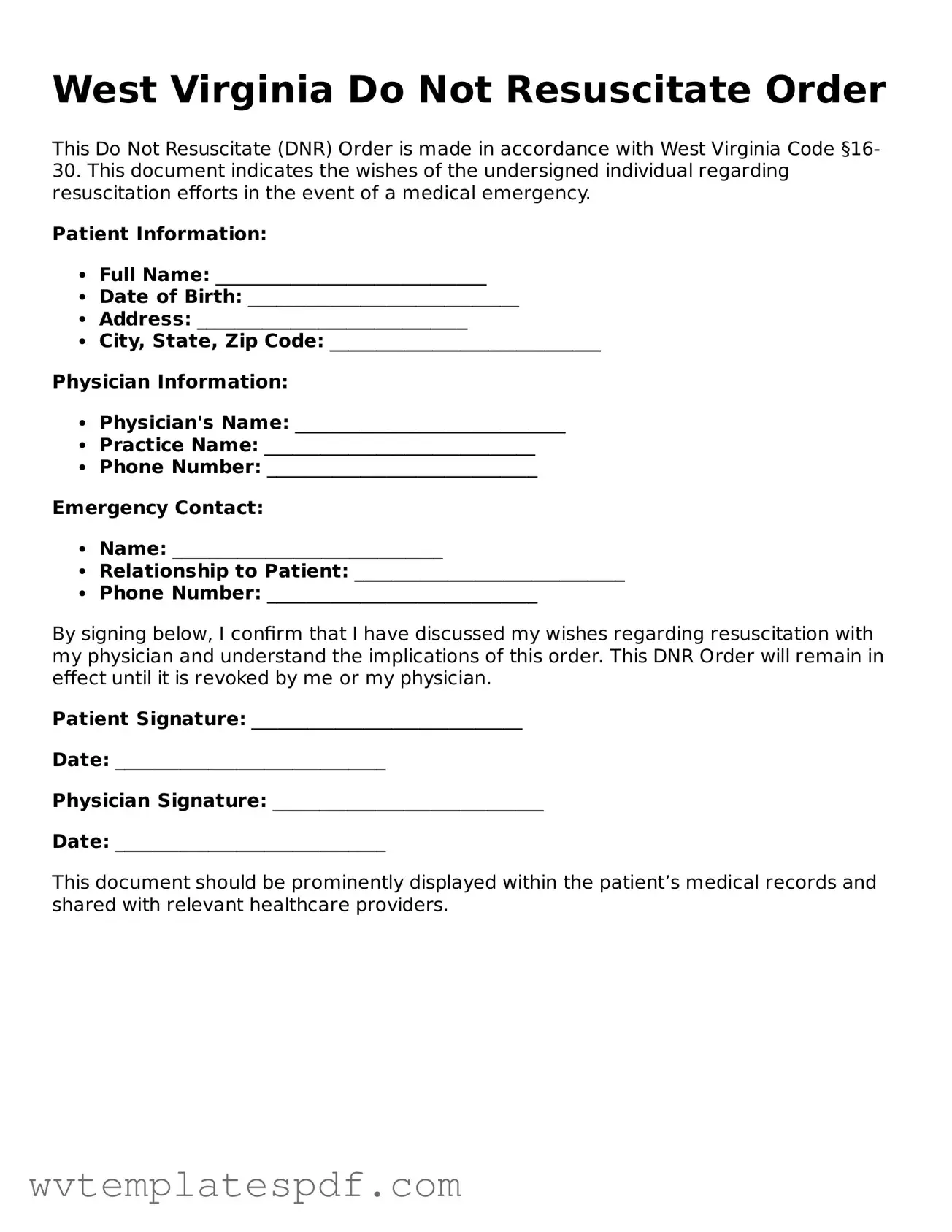Filling out a Do Not Resuscitate (DNR) Order form in West Virginia is a serious task that requires careful attention. Unfortunately, many individuals make common mistakes that can lead to confusion or complications in critical moments. Understanding these pitfalls can help ensure that your wishes are clearly communicated.
One frequent error is not including all required signatures. The DNR form must be signed by both the patient and their physician. If either signature is missing, healthcare providers may not honor the order. Always double-check that all necessary parties have signed before submitting the document.
Another mistake involves failing to clearly identify the patient. It’s essential to provide accurate personal information, including the full name, date of birth, and any other identifying details. If the information is vague or incorrect, it could lead to misunderstandings about whose wishes are being respected.
Some individuals also overlook the importance of discussing the DNR order with family members. This conversation is crucial for ensuring that loved ones understand the patient’s wishes. Without this discussion, family members may be caught off guard during a medical emergency, leading to confusion and potential conflict.
Moreover, people sometimes forget to review and update their DNR orders. Life circumstances can change, and it’s important to revisit the document regularly. If a patient’s health status or preferences change, the DNR order should reflect those updates. Neglecting this can result in a document that no longer aligns with the patient’s current wishes.
Lastly, many individuals fail to keep copies of the DNR order in accessible locations. It’s not enough to fill out the form; having copies on hand in various settings—such as at home, with family members, and in medical records—ensures that healthcare providers can easily access the order when needed. This simple step can make a significant difference in honoring the patient’s wishes during emergencies.
